| Hexaplex trunculus (Linnaeus, 1758) |
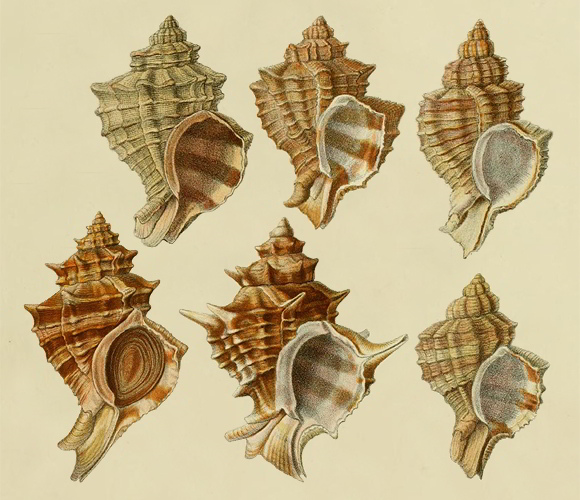 |
Galicia to Canarias, Madeira to Mediterranean. Also in Arcachon Basin (1996-1997, chenal Courbey), where numerous exchanges are made by local shell-farmers with their colleagues of Thau lagoon (Occitania).
Predator and scavenger in the infralittoral down to 70m deep, on various bottoms. The species provides the precious purple dye, which never fades once stabilized by the solar light, a colourant that was much sough after by the ancient people around the Mediterranean. Basionym: Murex trunculus.
Above, the species in W. Kobelt: Iconographie der schalentragenden europäischen Meeresconchylien vol I, Cassel 1887, plates III & IV. |
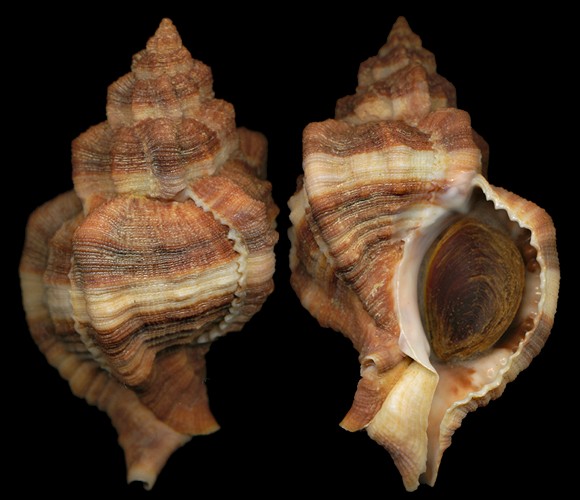 |
Synonyms: coronatus, dumosus, falcatus, fasciatus, gallicus, polygonulus, portulanus, purpurescens, ramulosus, rivalis, soldanii, solidior, subasperrimus, yoldii…
70mm. Santorini, South Aegean. |
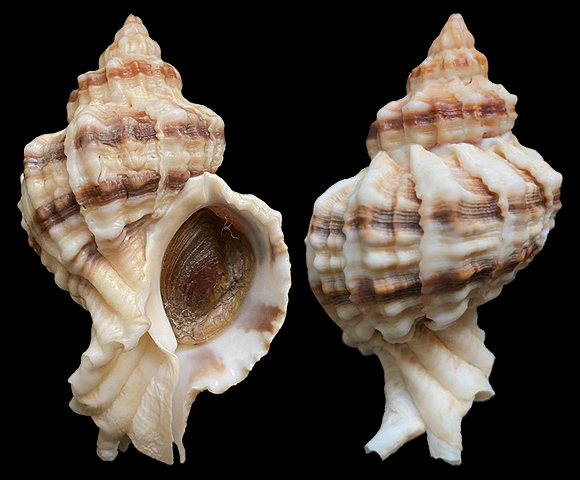 |
Many named variants: adusta, aestuari, alcus, argisus, arpellus, aspirtus, bonanni, buccinoides, bulo, campus, caudinus, curvispina, danili, dilatata, epitus, escius, gipus, gringus, lepigus, magnifica, minor, mixta, multinodosa, nigrefasciatus, pagodula, percus, ponderata, propeconglobata, pseudorudis, pultus, purpurifera, ritisus, roseotincta, sbirsus, spinosa, subtruncula, tetragona, tricuspidata, turritana, varicisnodosa, zicus…
A specimen from Malta, with many marked growth stops. 70mm. Original pictures provided by I. Mulero (ES).
– (CC BY-NC-SA) – |
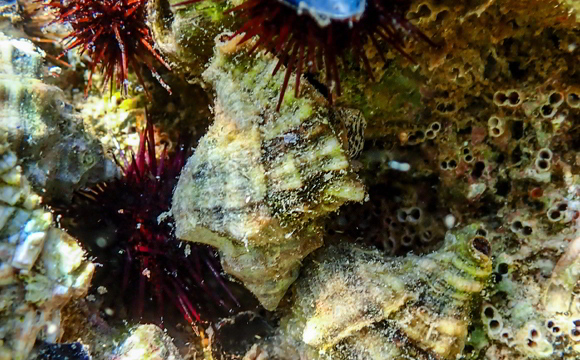 |
In shallow water on rock, among sea-urchins, on the shore, north-west of Vónitza, southern shore of the Ambracian Gulf, W. Greece. Original picture provided by solarboot-projekte for iNaturalist – (CC BY-NC). Notice the presence of a colony of the boring bivalve Rocellaria dubia (Pennant, 1777) on the wall at right, recognizable by the bilobate apertures of the erect tubes. |
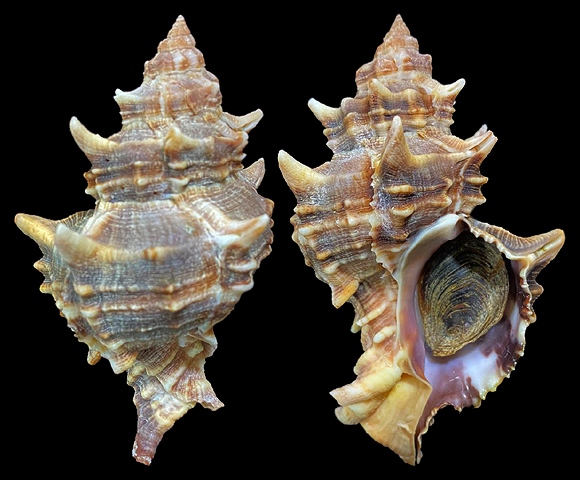 |
50-60m deep, Porto Cesareo, Lecce, Puglia, S. Italy. 100mm. Original pictures provided by I. Mulero (ES).
– (CC BY-NC-SA) – |
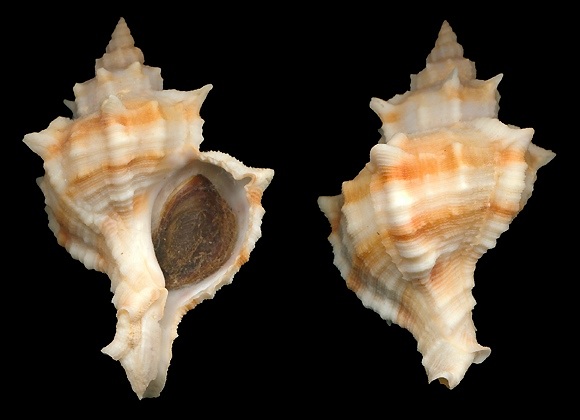 |
| Orange specimen from Savona, Liguria, NW. Italy. 60mm. |
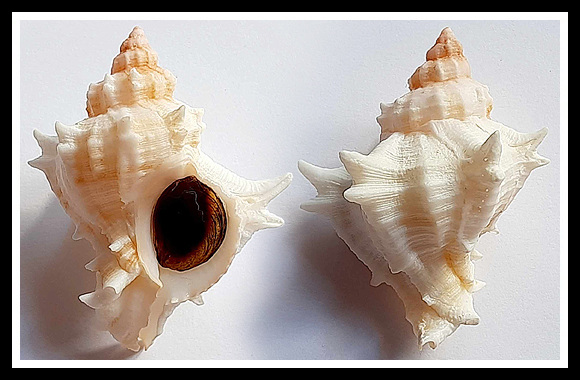 |
Jerba island, the Gulf of Gabes, S. Tunisia. 52mm.
Original picture provided by M. Weinberger (CZ).
– (CC BY-NC-SA) – |
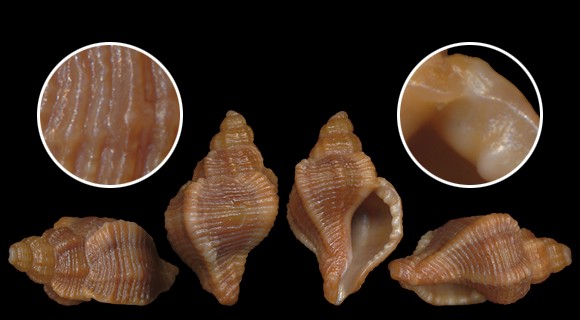 |
| Juveniles are sometimes found in beach drift, or in grit in shallow water. Jerba. 14mm. |
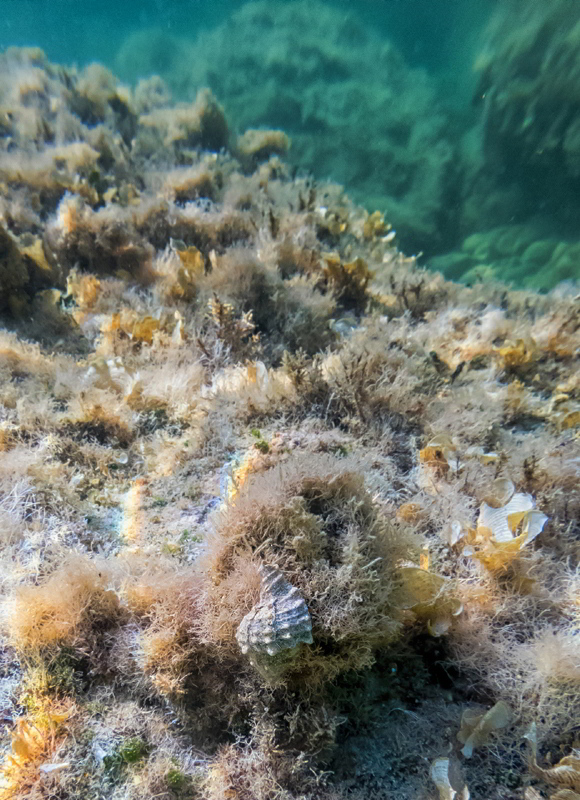 |
| Young adult: Paralia Glifoneri, on rocks, north of the harbour, Skópelos island, Northern Sporades, West Aegean. Original picture provided by marieta55 for iNaturalist – (CC BY-NC). |
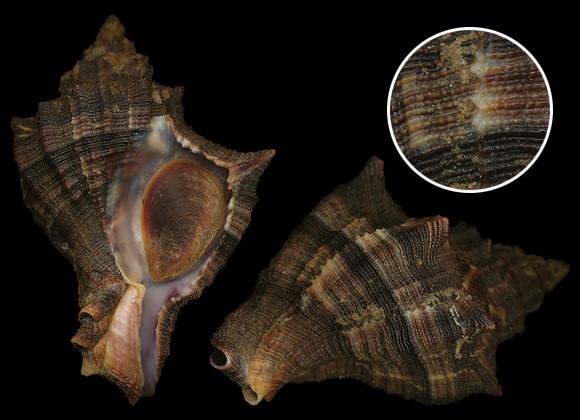 |
A dark population lives in Cagliari Bay, S. Sardinia.
Some other species from this area, such as O. erinaceus, B. brandaris, N. corniculum etc., show a same propensity to melanism. 53mm, 2009. Ex coll. F. Daga (IT). |
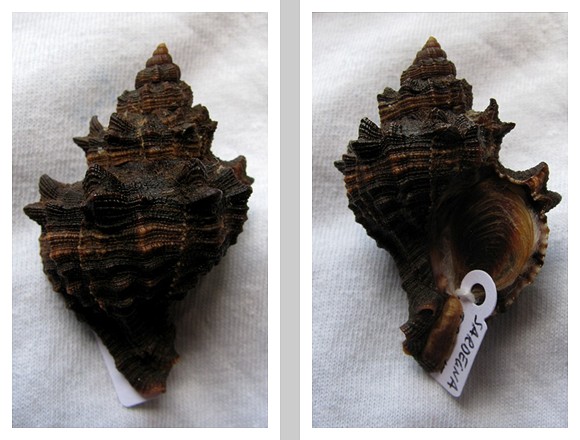 |
Above and below:
3-4m deep, on rocks, Sant’Antioco island, Carbonia-Iglesias, SW. Sardinia. 48-50mm.
Original pictures provided by F. Daga (IT) – (CC BY-NC-SA). |
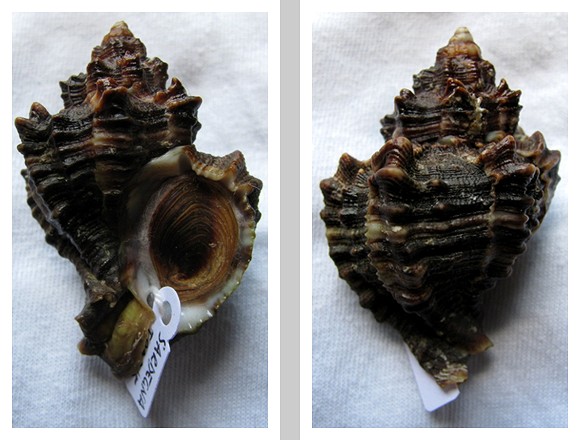 |
Two rows of sharp knobs on the shoulder.
It is the form "dupliaculeatus" Settepassi, 1970. Original pictures provided by F. Daga (IT) – (CC BY-NC-SA). |
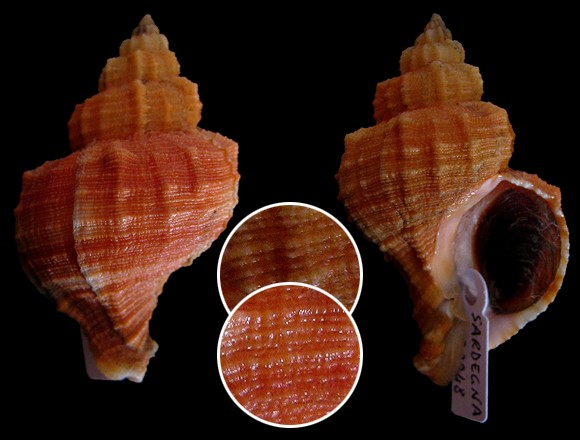 |
Orange-red specimen from Cagliari gulf. 48mm.
Original pictures provided by F. Daga (IT) – (CC BY-NC-SA). |
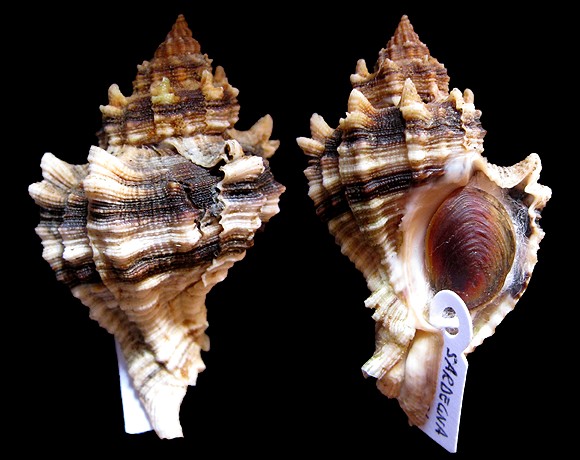 |
| A “dupliaculeatus” (double crown) from Cagliari Gulf. 46mm. |
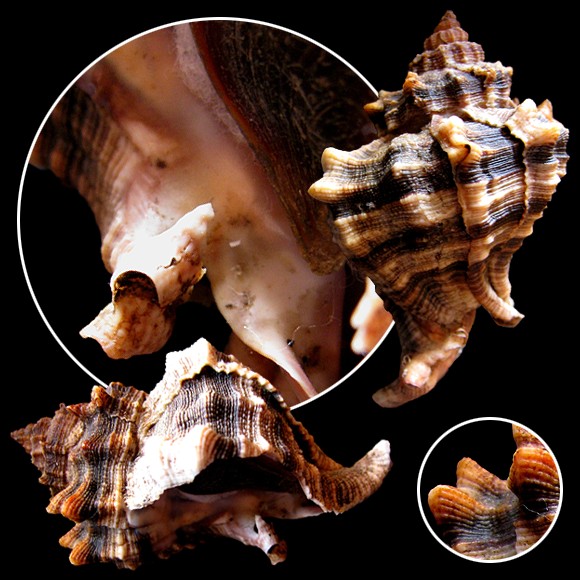 |
Variant “bicaudatus” (a form of “bifidus”).
60mm. Original pictures provided by F. Daga (IT).
– (CC BY-NC-SA) – |
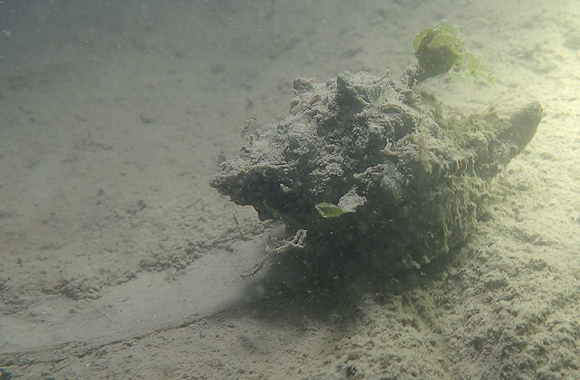 |
| At night in shallow water, SE. end of the Grau de Pisse Saumes, Marseillan-Plage, Agde, Hérault, S. France. Original picture provided by J. Renoult for iNaturalist – (CC BY-NC). |
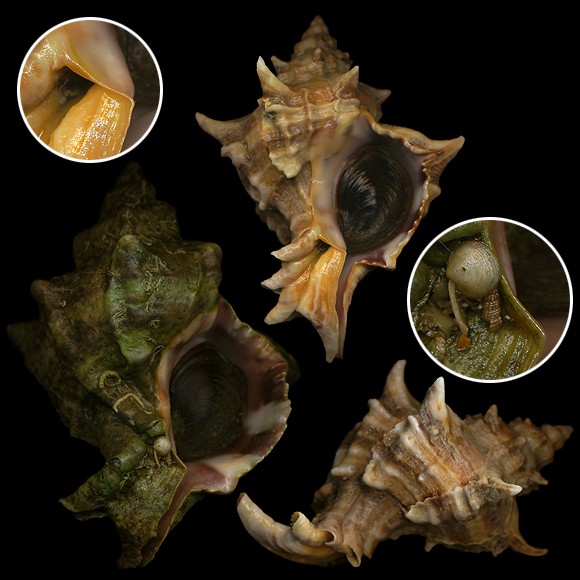 |
| Large specimens from Elounda lagoon, collected at 4-8m deep, along Kolokithia coast, NW. of Kolpos Mirabellou, Lasithi, N. Crete. 79-88mm. |
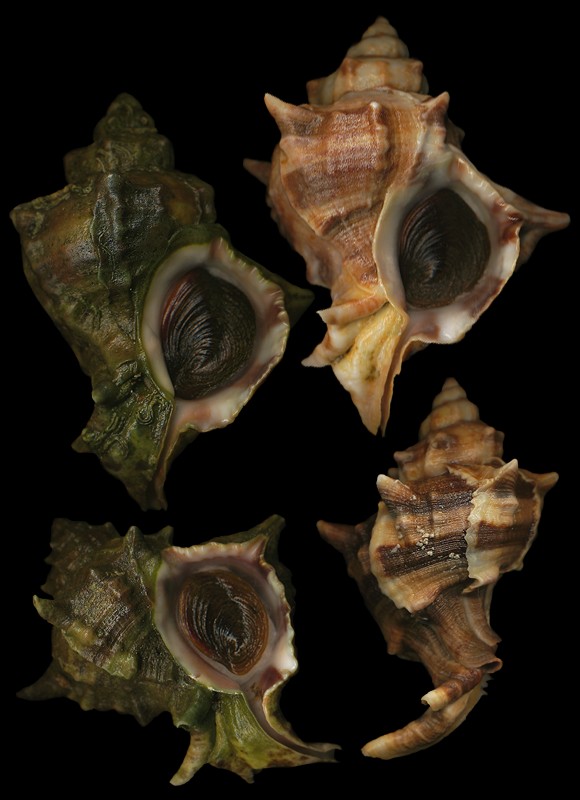 |
| Same spot. 66-76mm. Specimens from lagunar systems are often spectacular and heavy. |
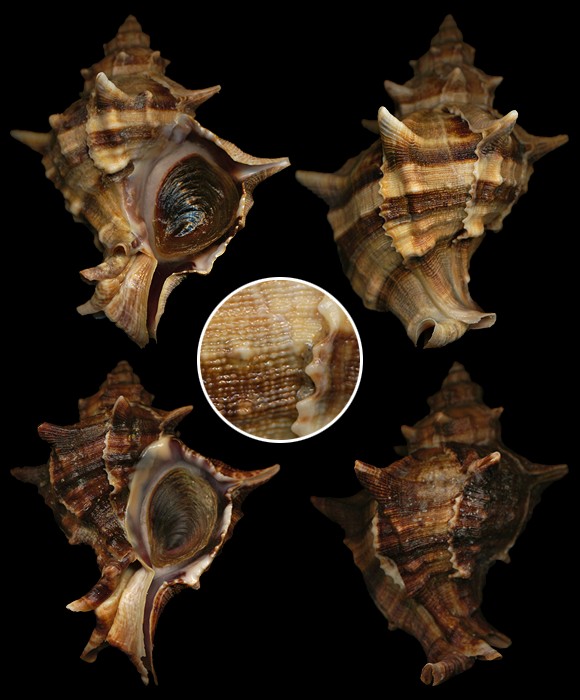 |
| Same spot. 68-70mm. |
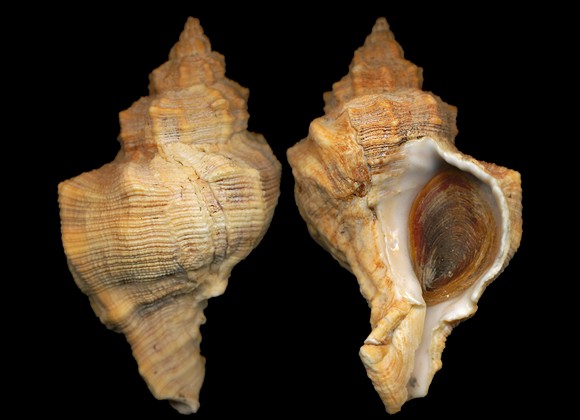 |
| 13m deep, Fano, Puglia, S. Italy. 67mm. |
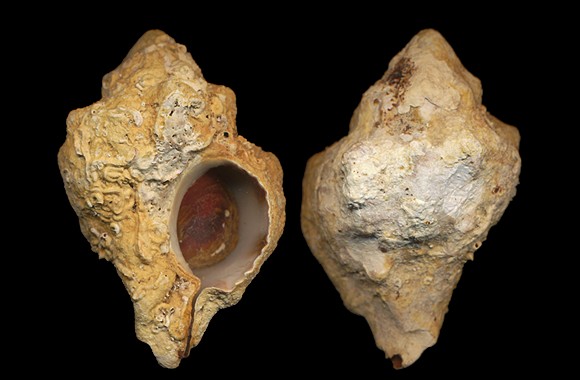 |
| 4m deep, on gravel and little stone near muddy ground, Port-Miou inlet, Cassis, Provence, S. France. 50mm. |
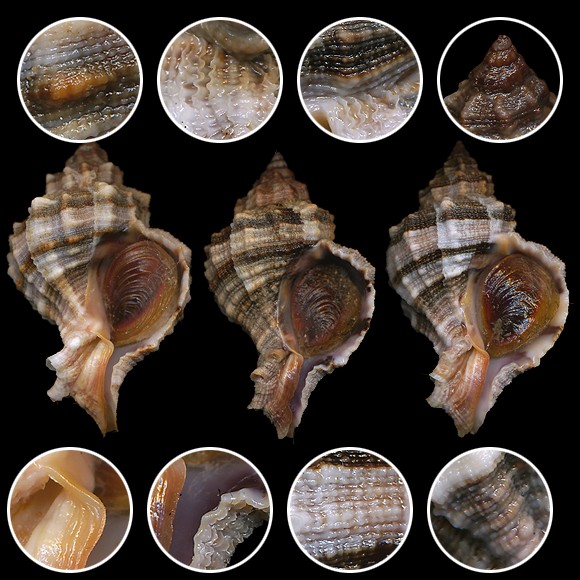 |
| Variant “buccinoides”. 1-2m deep, on sand bottom, in the Mar Menor, La Manga, Murcia, S. Spain. The Mar Menor is the largest lagunar system in Europe, with a high salinity level. The local population is rather small, with weak knobbing and perfect pattern. 50-52mm. |
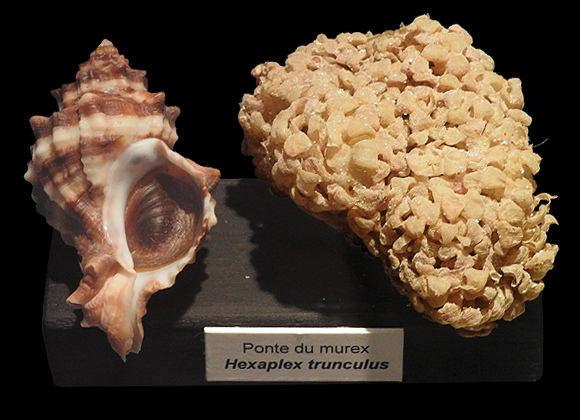 |
| The species and its eggs, displayed at the Musée des coquilllages (Association SOS Grand Bleu), Saint-Jean-Cap-Ferrat, Alpes-Maritimes, SE. France. |
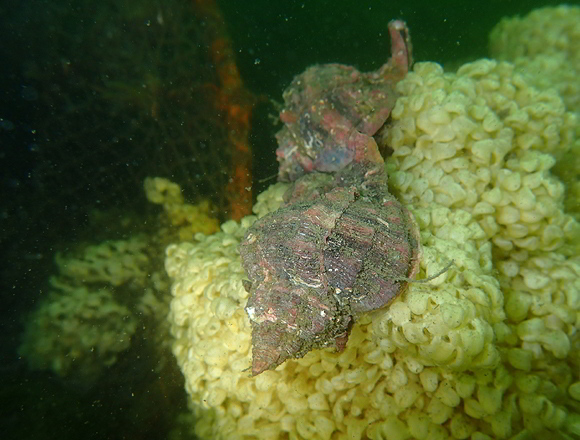 |
| Two adults on the eggs. Frontignan, near the mouth of the Canal du Rhône à Sète, Hérault. Original picture provided by J. Renoult for iNaturalist – (CC BY). |
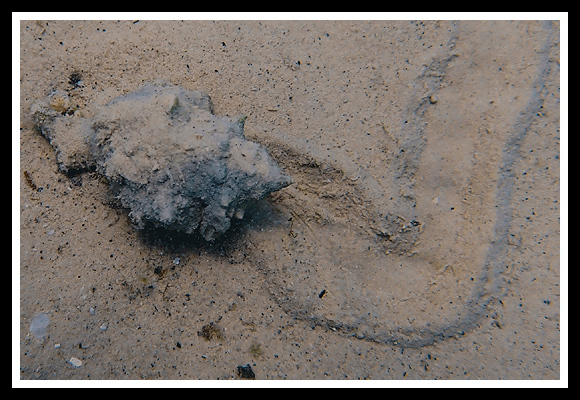 |
| 9m deep, on sand, Prapatno bay, southern coast of Pelješac peninsula, Dubrovnik-Neretva Comitat, S. Croatia. |
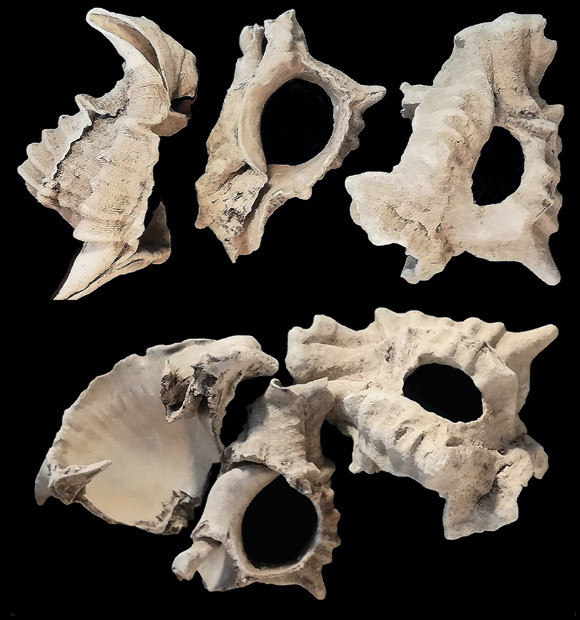 |
Old specimens found at 2,5-3m deep inside the sediment, bottom at 1m, Vranjic Bay, north of Split, S. Croatia. All the shells were crushed, in order to remove completely the animal, possibly to collect the purple dye gland. Original pictures provided by N. Lete (HR) – (CC BY-NC-SA). |
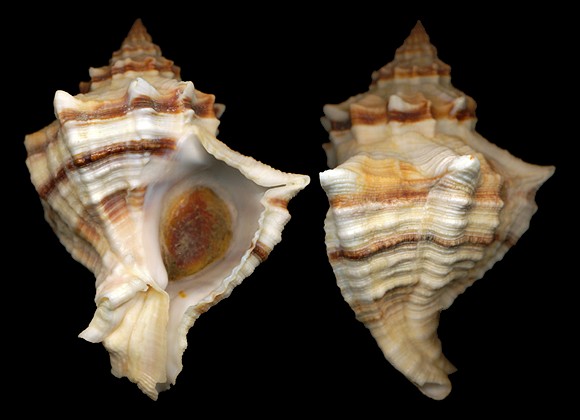 |
| Specimen from near Atlantic. 20-30m deep, in nets, off Cape Trafalgar, Cádiz, W. Andalucia, SW. Spain. 59mm. |
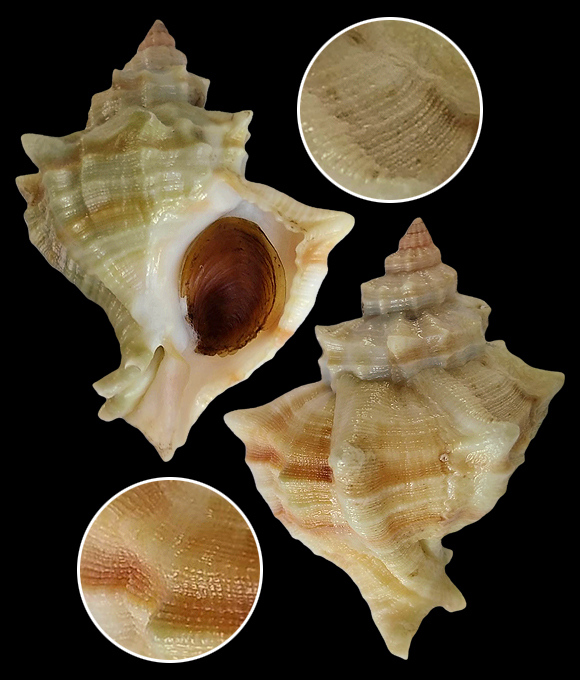 |
| Infralittoral, Cadiz area. 66mm. Original pictures provided by B.J. Muñoz Sánchez (ES) – (CC BY-NC-SA). |
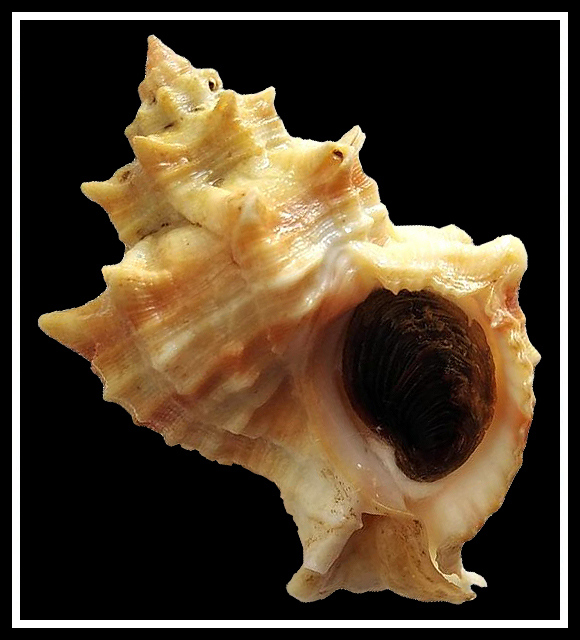 |
| In cray pot, Cadiz area. 73,4mm. Original picture provided by B.J. Muñoz Sánchez (ES) – (CC BY-NC-SA). |
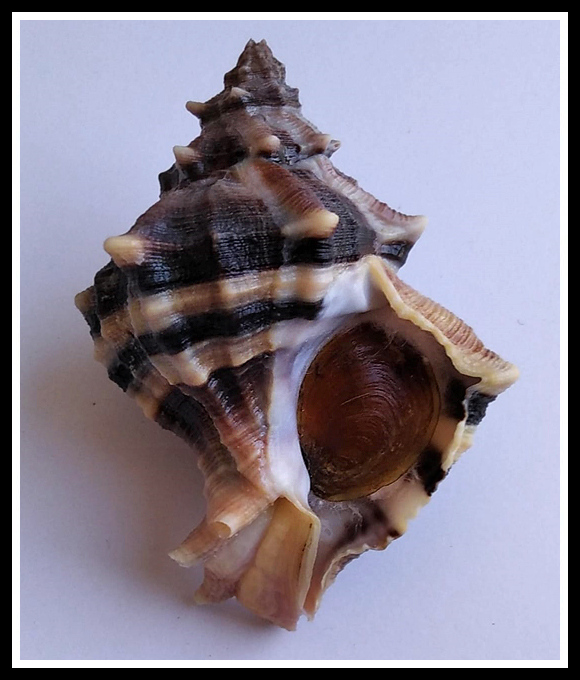 |
| Another one caught by fishermen. Same area. Original picture provided by B.J. Muñoz Sánchez (ES) – (CC BY-NC-SA). |





























